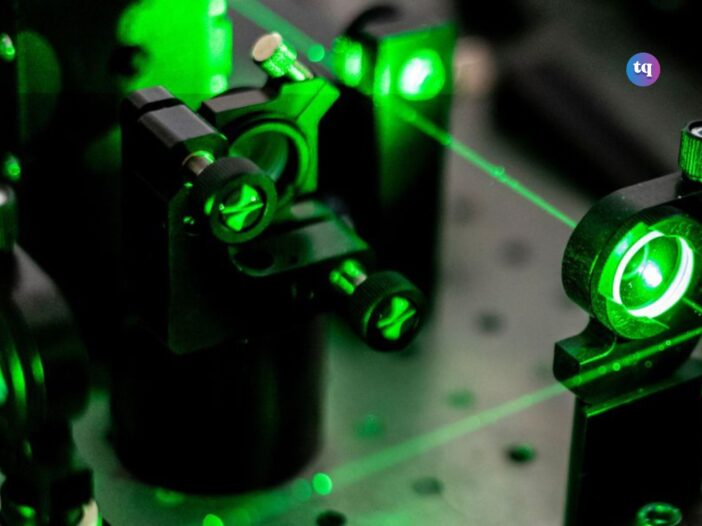
Table of Contents
Lasers Can Be Traced Back to 1916
Laser stands for “light amplification by stimulated emission of radiation.” In 1916, Albert Einstein posited a theory of how excited electrons in a material emit photons, or light particles, when they return to their original state. Stimulating the emission of photons creates a laser beam in which all the light is of the same wavelength and travels on a synchronized path, making the light exceptionally intense.
In 1960, Theodore Maiman generated the first laser at California’s Hughes Research Laboratory. Though scientists joked that a laser was “a solution looking for a problem,” they kept experimenting with lasers, ultimately enabling discoveries that resulted in no less than 10 Nobel Prizes.
A Laser Measured the Distance Between the Earth and the Moon
The 1969 moon landing was “one small step for man, one giant leap for mankind.” But it was also a straightforward scientific expedition. Along with scooping up moon rocks to return to Earth, the Apollo astronauts placed scientific instruments on the moon’s surface that measured seismic activity and analyzed the composition of the solar wind.
They also placed a laser-reflecting device on the moon’s surface and used it to measure the distance from the moon to Earth. Scientists on Earth measured how long it took for the laser beam to travel to the moon, bounce off the device, and return to Earth. The resulting measurement was accurate within the width of a finger.
The First Product Laser Scanned in a Supermarket Was a Pack of Gum
Barcode technology began in the 1940s but only became commercially viable with the development of barcodes and the invention of laser barcode readers in the late 1960s. The first product scanned using barcode technology and a laser scanner was a pack of gum, scanned at Marsh’s supermarket in Troy, Ohio, in 1974.
Lasers Have Profiles
Lasers measure things, but they also must be measured. One thing you may not have known about lasers is that even though laser light is all the same wavelength, the components in the optical device that generates the laser, the medium the light travels through, and the materials in the target can affect a laser beam’s shape and diameter. That’s why anyone who uses a laser routinely in research, medicine, or measurement needs to select a laser beam profiler to ensure their laser has the right power, intensity, and shape to produce accurate results.
Bottom Line
Lasers are not toys. When used incorrectly, even seemingly benign pointers can cause injury. But in the right hands, lasers can help with cosmetic concerns like excess hair removal, or a desire for vision correction without glasses, as in LASIK eye surgery. And if it’s fun you’re looking for, try to count the number of times in a typical day you encounter lasers—at the grocery store, in a DIY measuring project, or at a medical office. You’ll be surprised at how common they are!